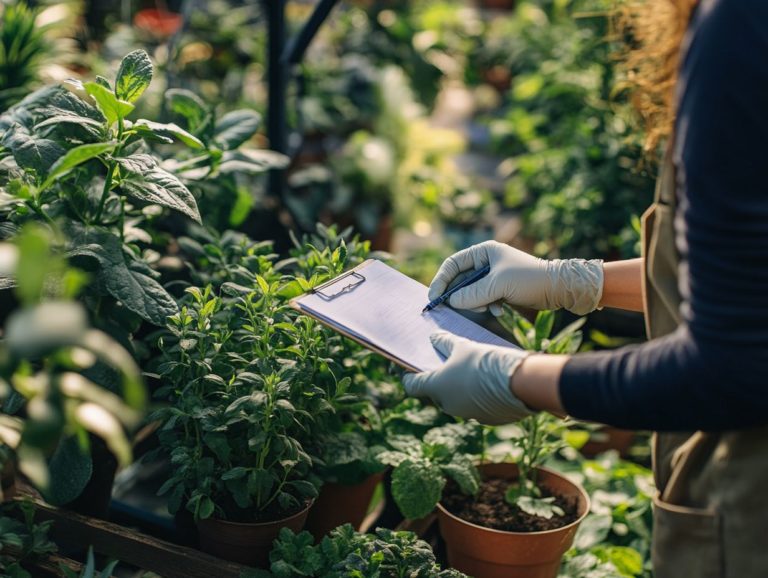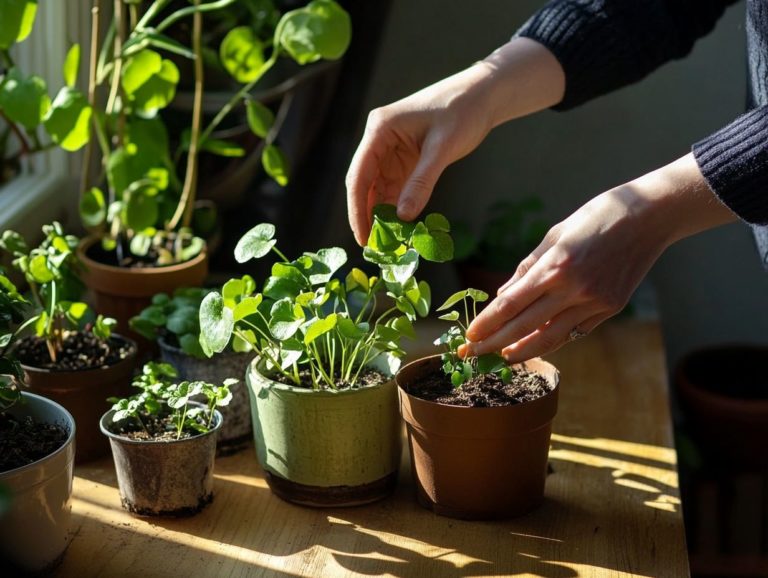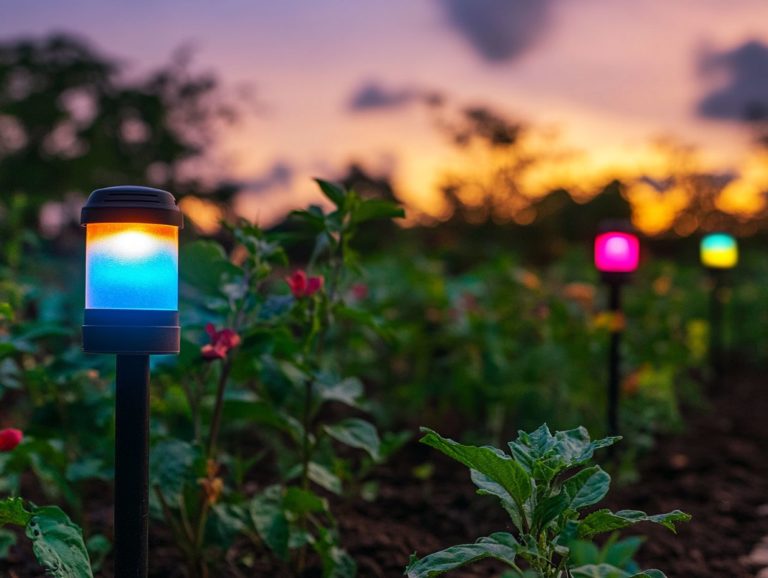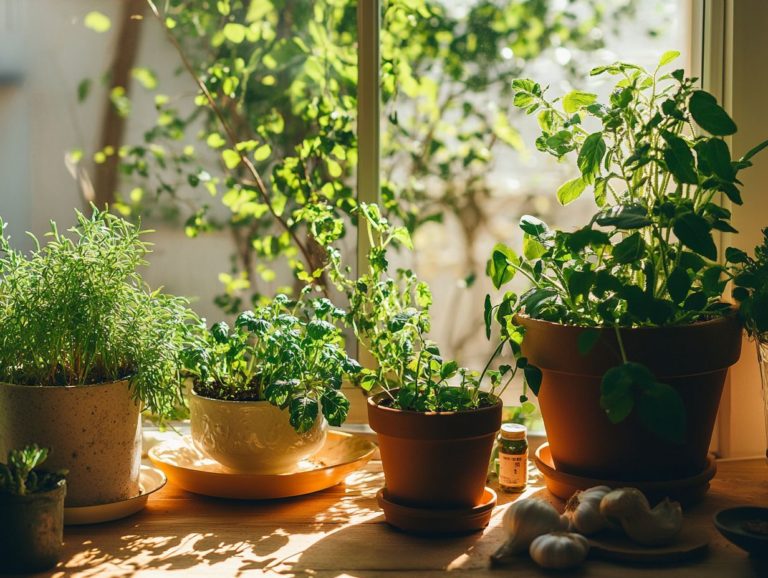Top 7 Indoor Plant Pest Myths Debunked
Indoor plants infuse your home with vibrancy and charm. Yet, the prospect of pests looms large for many plant enthusiasts.
Misinformation often clouds the issue, leaving you uncertain. This article seeks to clarify by debunking seven prevalent myths surrounding indoor plant pests. We ll address everything from the misconception that all pests are bad news to misunderstandings about natural remedies.
Equipped with the right insights, you can confidently identify, prevent, and tackle pest problems. This will ensure your plants flourish. Let s jump in and get your plants thriving!
Contents
- Key Takeaways:
- 1. Myth 1: All Pests Are Harmful to Plants
- 2. Myth 2: Indoor Plants Don’t Get Pests
- 3. Myth 3: Pests Only Come from Other Plants
- 4. Myth 4: Natural Remedies Are Always Effective
- 5. Myth 5: Overwatering Kills Pests
- 6. Myth 6: Pesticides Are the Only Solution
- 7. Myth 7: One Treatment Is Enough to Get Rid of Pests
- How to Properly Identify and Treat Indoor Plant Pests
- What Are the Most Common Indoor Plant Pests?
- How Can You Prevent Pests from Infesting Your Indoor Plants?
- What Are the Most Effective Ways to Get Rid of Indoor Plant Pests?
- What Are the Best Natural Remedies for Indoor Plant Pests?
- What Are the Risks of Using Pesticides on Indoor Plants?
- How Often Should Indoor Plants Be Checked for Pests?
- What Are the Signs of a Severe Pest Infestation in Indoor Plants?
- Frequently Asked Questions
- What are the top 7 indoor plant pest myths?
- Is it true that bugs only attack outdoor plants?
- Do only sick plants attract pests?
- Are regular pesticides the best solution for indoor plant pests?
- Can all pests be controlled with DIY methods?
- Do pests only target certain types of plants?
- Does overwatering cause pest infestations?
Key Takeaways:
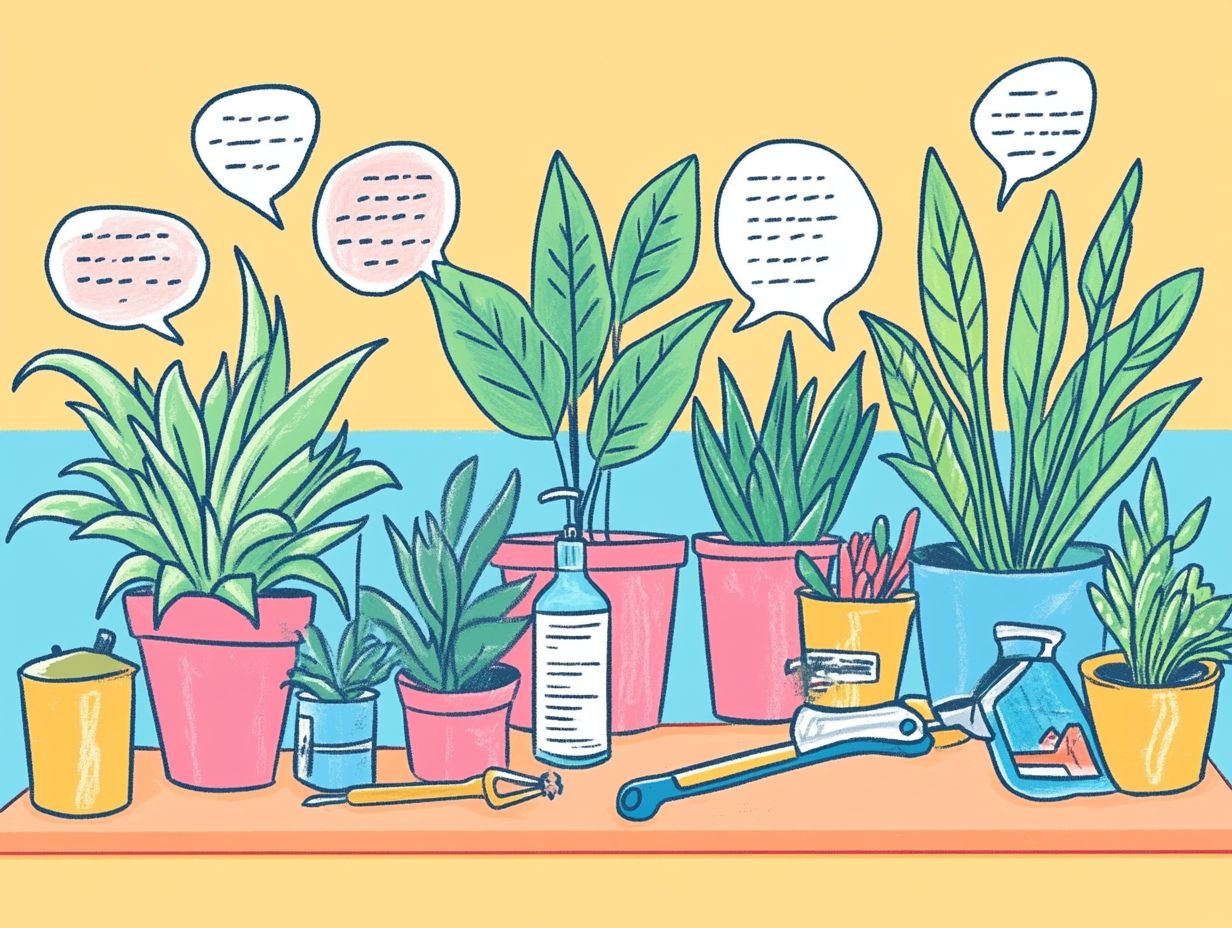
- Surprise! Not all pests are bad. Some can actually help your plants thrive!
- Indoor plants are not immune to pests and can be susceptible to infestations.
- Pests can come from various sources, not just other plants. Keep a close eye on your plants to catch pests early!
1. Myth 1: All Pests Are Harmful to Plants
While you may think that all pests are harmful to your beloved houseplants, it s important to understand that not every pest is bad news. In fact, some can actually be beneficial, playing a vital role in keeping your indoor garden in harmony by managing other pest populations.
Take aphids, for example they can be a real menace to your indoor plants with their rapid reproduction and knack for sucking the life out of your foliage. On the flip side, ladybugs are your garden’s unsung heroes, eagerly dining on aphids and helping to maintain that delicate ecosystem you re striving for.
Knowing the difference between harmful pests and their helpful allies is essential for you as an indoor gardener. Factors like keeping humidity at the right level and ensuring proper lighting bolster your plants’ health and create a thriving habitat for beneficial insects. This leads to a more sustainable and vibrant indoor gardening experience that you can truly enjoy.
2. Myth 2: Indoor Plants Don’t Get Pests
Contrary to popular belief, indoor plants are not immune to pests. Various pests can thrive in the controlled conditions of indoor environments, impacting the health and growth of your houseplants.
You might find yourself battling common invaders like spider mites and mealybugs, which can quickly wreak havoc on your green companions. These pests are particularly drawn to the warmer temperatures and fluctuating humidity levels often found in homes.
When your indoor environment lacks proper humidity, your plants may become stressed, making them more vulnerable to infestations. As these unwelcome guests multiply, they can sap the vitality of your plants, leading to stunted growth, wilting leaves, and even plant death if not managed promptly.
It’s key to understand how your indoor gardening conditions affect pests. Understanding this interplay is crucial for maintaining a thriving indoor garden.
3. Myth 3: Pests Only Come from Other Plants
Many houseplant owners may think that pests spring solely from other plants. However, pests can infiltrate your indoor oasis through various channels think contaminated soil, gardening tools, and even the air you breathe.
These uninvited critters can hitch a ride on your clothing or pets, complicating your quest to maintain a pest-free haven. To safeguard the health of your indoor plants, consistently inspect your greenery for any signs of infestation.
Implementing clean gardening practices, like sterilizing your tools after each use and sourcing soil from reputable suppliers, can significantly minimize the risk of pest intrusion.
By fostering a clean and controlled environment, you promote the vitality of your plants and reduce the chance of unwanted visitors that could disrupt their growth and charm, particularly in dark corners.
4. Myth 4: Natural Remedies Are Always Effective
While you might view natural remedies as the go-to solution for indoor plant pests, their effectiveness can vary quite a bit depending on the type of pest and the severity of the infestation. They re not a one-size-fits-all answer.
Take neem oil, for example. Neem oil is famous for disrupting the life cycles of pests like aphids. However, it may not be effective against tougher pests, like whiteflies. On the flip side, insecticidal soap is useful for managing soft-bodied insects, but it requires direct contact to work its magic. That can be tricky when you re dealing with a heavily infested plant.
You also need to consider environmental factors. Treatments may be less effective in high humidity or if applied during peak sunlight hours. Understanding these details is key to successful gardening!
5. Myth 5: Overwatering Kills Pests
Many might think that overwatering is a surefire way to banish pests, but the truth is quite the opposite. Overwatering can set the stage for pest infestations and jeopardize the overall health of your indoor plants.
Excess moisture in the soil doesn t just impede proper root growth; it creates a paradise for pests like fungus gnats, which flourish in damp conditions. These pests feed on your plant s roots and can even transmit diseases that further compromise their vitality.
To tackle such challenges, establish a balanced watering schedule that aligns with your plant s specific needs and seasonal changes. By doing this, you ll promote robust root systems and cultivate an environment that s less inviting to pests, leading to healthier plants with lush, vibrant foliage.
6. Myth 6: Pesticides Are the Only Solution
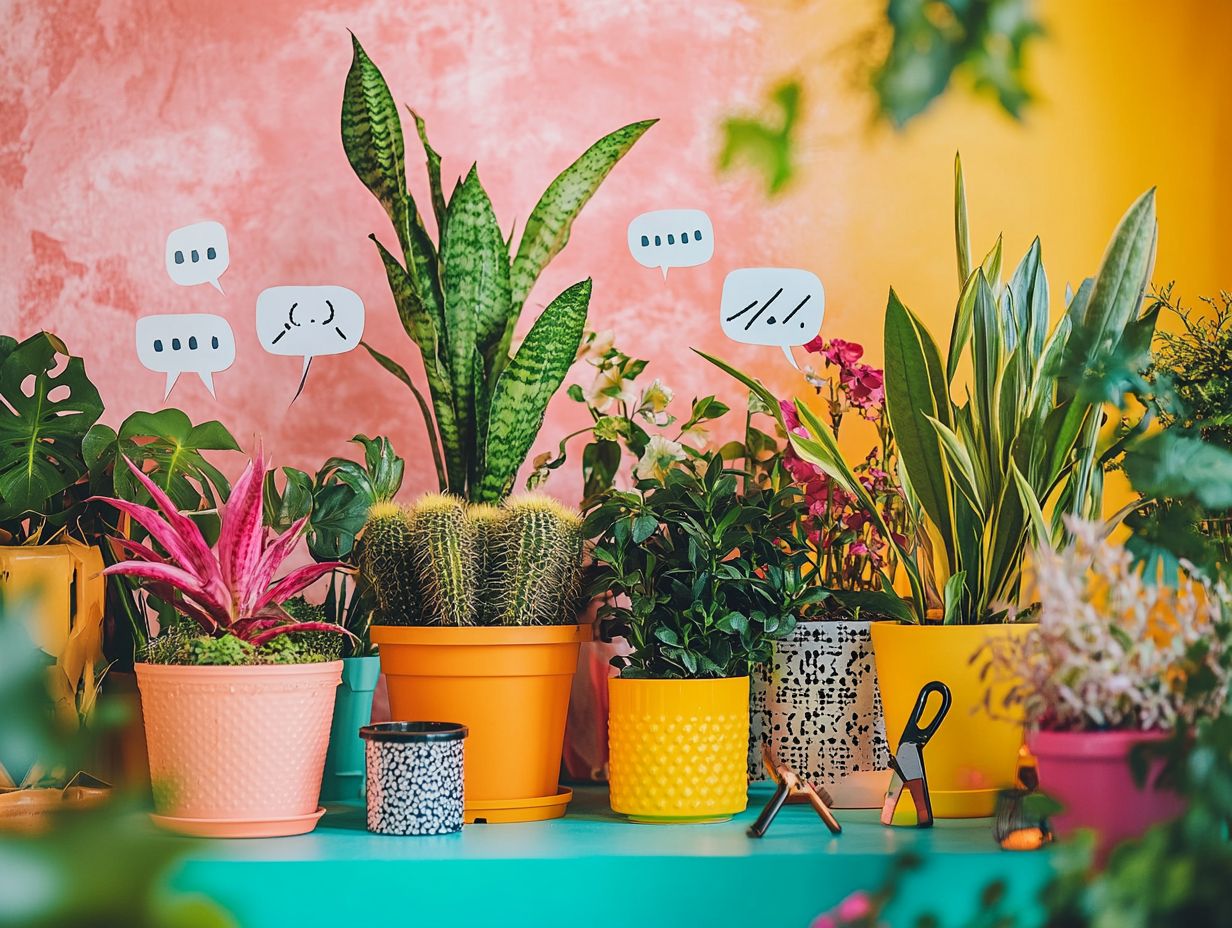
The idea that pesticides are the only answer to indoor plant pests is a common misconception. In reality, there are numerous effective alternatives for pest control that are far less harmful to both your plants and the environment.
Among these alternatives, integrated pest management (IPM) is a method that combines different strategies to manage pests effectively. IPM focuses on prevention and meticulous monitoring of pest populations. Instead of relying solely on chemical solutions, it encourages a holistic approach.
This includes techniques like habitat manipulation and fostering the presence of beneficial insects such as ladybugs and lacewings. These natural allies can significantly diminish pest populations without the risks typically associated with traditional pesticides. Switching to IPM can lead to thriving plants! Don t wait start using these methods today!
When you compare these strategies to conventional methods, it becomes evident that adopting IPM enhances safety for your plants and offers a more sustainable and effective long-term solution.
7. Myth 7: One Treatment Is Enough to Get Rid of Pests
The notion that a single treatment can completely rid your indoor plants of pests is a dangerous myth. Effective pest management typically requires multiple treatments and continuous monitoring of plant health.
This approach is vital because pest problems can evolve, influenced not just by the pests themselves but also by environmental factors like humidity, temperature, and the overall condition of your plants. Regular inspections enable you to detect emerging issues early, allowing you to address them promptly.
Recognizing that pests thrive under certain conditions underscores the necessity for a holistic strategy. By considering all the variables affecting plant health, you can ensure that your treatments remain effective and your plants continue to flourish.
How to Properly Identify and Treat Indoor Plant Pests
Identifying and treating indoor plant pests is essential for maintaining the health of your houseplants. With the right knowledge and tools, you can manage pest infestations effectively and foster optimal plant growth.
Recognize the signs of common pests aphids, spider mites, and mealybugs. Look for tiny speckles on leaves, discolored patches, or the presence of visible insects. For more information on these issues, check out what are the most common indoor plant pests. These may indicate an invasion.
After pinpointing the issue, select treatment options that fit the infestation’s severity and your preferences. While chemical treatments may offer a quick fix, natural remedies like neem oil or insecticidal soap are often safer for the environment and beneficial insects.
Commit to consistent monitoring and care. This includes regularly cleaning leaves and following appropriate watering practices. Diligence helps prevent future problems and ensures that your houseplants thrive, even with occasional setbacks.
What Are the Most Common Indoor Plant Pests?
Aphids, spider mites, and mealybugs each present unique challenges for houseplant owners. Understanding these pests is essential for maintaining plant health.
Aphids are small, soft-bodied insects that gather on the undersides of leaves, sucking sap and causing stunted growth and yellowing of foliage especially on popular varieties like the peace lily.
Spider mites thrive in dry conditions, creating fine webbing on plants like succulents. Left untreated, this can lead to leaf drop. Mealybugs, with their cotton-like appearance, leave a sticky residue that attracts mold, particularly on cherished houseplants like pothos.
Address infestations promptly to keep your plants vibrant instead of struggling.
How Can You Prevent Pests from Infesting Your Indoor Plants?
Preventing pests is a crucial aspect of houseplant care. It requires a blend of environmental management, regular inspections, and proactive measures.
Maintain optimal humidity and temperature levels to create an environment that discourages pests. Regularly check the moisture levels in the soil, ensuring it is clean and free from debris. Before introducing new plants to your collection, conduct a thorough inspection to catch potential pests early, and consider these top tips for indoor plant care troubleshooting.
This proactive approach, combined with methods like using natural repellents or barriers, can significantly reduce pest risks. Enjoy your indoor garden without worries!
What Are the Most Effective Ways to Get Rid of Indoor Plant Pests?
Effective pest elimination involves a combination of preventative measures, targeted treatments, and regular monitoring for the long-term health of your plants.
Keep humidity and light levels just right to create an environment uninviting to pesky insects. Use organic insecticidal soaps or neem oil to tackle infestations without harming beneficial insects.
Remember, a single treatment may not suffice; repeated applications and diligent observation of your plants are crucial for breaking the pest life cycle. Embrace a combination of different pest control methods for a sustainable strategy to keep your plants thriving and pest-free.
Start checking your plants today to keep them healthy and beautiful!
What Are the Best Natural Remedies for Indoor Plant Pests?
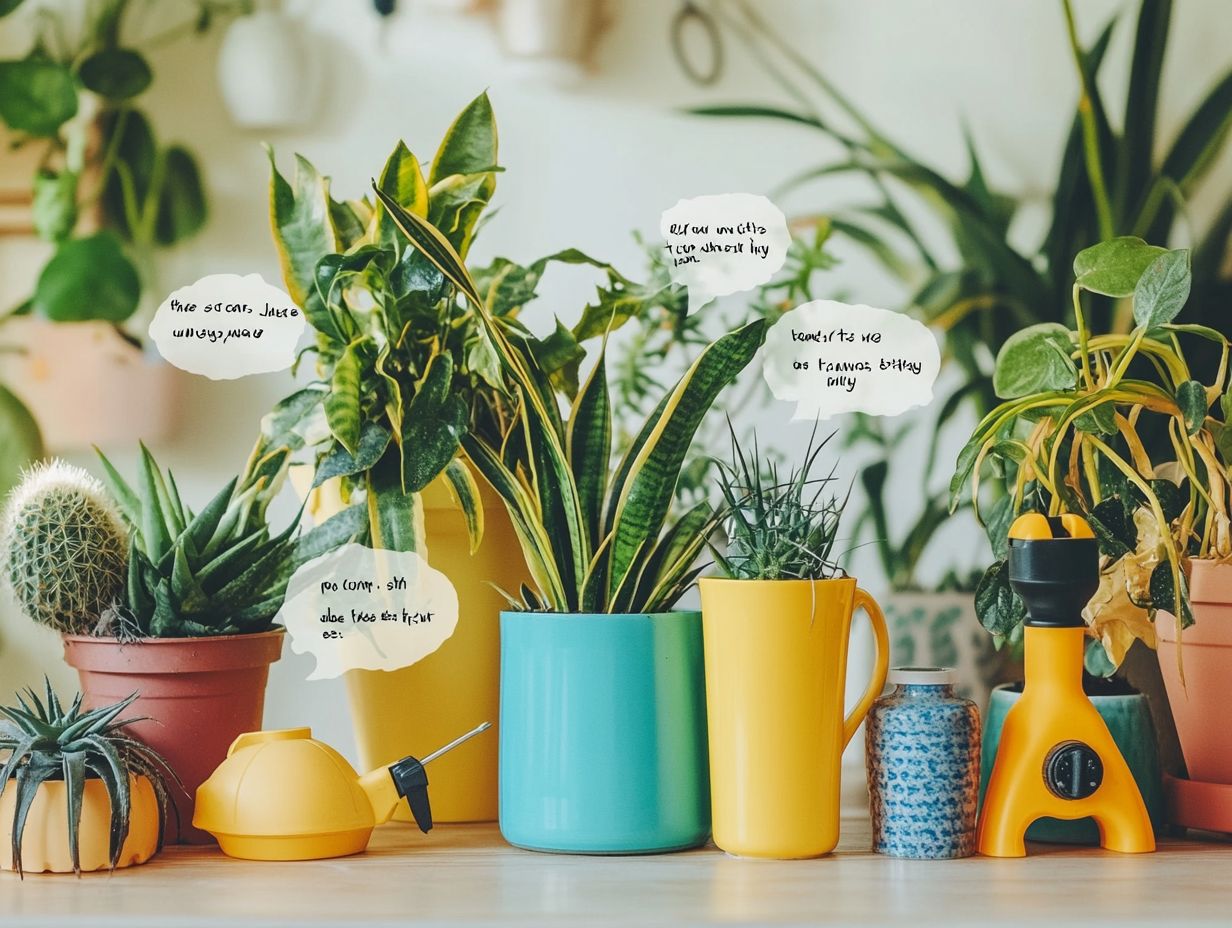
Natural remedies for indoor plant pests, such as neem oil and soap that kills insects, provide eco-friendly alternatives for effective pest control. These methods eliminate the need for harmful chemicals.
You’ll also find several other natural solutions worth considering. A natural powder that can deter bugs, for instance, can be sprinkled around the base of your plants. A simple mixture of soap and water is handy for combating aphids and spider mites. Don t miss out on the power of garlic spray just steep crushed garlic in water, and you’ll have a potent repellent for various pests.
By incorporating these remedies into your care routine, you keep your plants healthy and create a safer environment for your greenery and home. Observing how each remedy interacts with different plant species allows you to tailor your pest management approach, especially by understanding indoor plant pests and their impact, fostering the vitality of your plants.
What Are the Risks of Using Pesticides on Indoor Plants?
Using pesticides on your indoor plants can carry significant risks. You might inadvertently harm beneficial insects, create potential toxicity for your pets and family, or even damage your delicate houseplants if the chemicals aren t applied properly.
Overusing these chemicals can lead to serious environmental issues, like soil degradation and water contamination. These issues can have lasting effects on local ecosystems. When you repeatedly apply pesticides, pests can develop resistance, making future outbreaks increasingly difficult to manage.
To navigate these risks, explore safer alternatives like neem oil or insecticidal soap, which tend to be less harmful to the surrounding environment. Implementing best practices like applying treatments at specific pest life stages and rotating different methods boosts efficacy while safeguarding your plants and their ecosystems.
How Often Should Indoor Plants Be Checked for Pests?
Regularly inspecting your indoor plants for pests is essential for maintaining a vibrant indoor gardening environment. It’s recommended that you check your plants at least once a week.
These routine checks help you catch any unwanted invaders early on. This allows for timely intervention before minor infestations escalate into major problems. During your inspections, be vigilant for common signs of pests, such as irregular spots, webbing, or frass. These signs could indicate the presence of pesky insects like aphids or spider mites.
Keeping meticulous records of any pest occurrences note the dates, types of pests, and treatment methods can significantly enhance your understanding of pest patterns and how effective your management strategies are. By prioritizing early detection, you safeguard your plants and minimize the need for more drastic measures down the line.
What Are the Signs of a Severe Pest Infestation in Indoor Plants?
Identifying the signs of a severe pest infestation in your indoor plants is essential for prompt intervention. Symptoms such as yellowing leaves, sticky residue, and visible pests clearly indicate that problems may have advanced significantly.
Along with these telltale signs, keep an eye out for other visual cues. Webbing on the leaves often points to spider mites, while small holes can indicate nibbling from caterpillars or beetles. You might also notice a decline in your plant’s overall vigor and growth. Additionally, be aware of common myths about indoor plants that could affect your care routine.
Recognizing these signs early can mean the difference between saving a cherished plant and facing irreversible damage. When pests take over, they detract from your plants’ beauty and compromise their health. Acting swiftly is crucial for restoration and overall wellbeing.
Frequently Asked Questions
What are the top 7 indoor plant pest myths?
- Bugs only attack outdoor plants.
- Only sick plants attract pests.
- Regular pesticides are the best solution.
- All pests can be controlled with DIY methods.
- Pests only target certain types of plants.
- Overwatering causes pest infestations.
- Indoor plants don’t need pest prevention.
Is it true that bugs only attack outdoor plants?

No, this is a myth. Indoor plants can be just as prone to pests as outdoor ones.
Pests can enter your home through open windows and doors, cling to your clothing, or accompany new plants.
Do only sick plants attract pests?
Sick plants may attract more pests, but healthy plants are not safe either.
Pests are drawn to the nutrients and moisture in any plant, making all plants potential targets.
Are regular pesticides the best solution for indoor plant pests?
No, regular pesticides can harm both your plants and your health.
Using natural methods, like beneficial insects or homemade sprays, is a safer choice.
Can all pests be controlled with DIY methods?
Not all pests respond well to DIY methods.
Some, like spider mites and mealybugs, may need targeted treatments. Consult a professional if your DIY methods fail.
Do pests only target certain types of plants?
No, pests can infest any type of plant.
While some pests prefer specific plants, they are not limited to just those.
Does overwatering cause pest infestations?
Overwatering doesn t directly lead to pests, but it can weaken plants.
This weakness makes them more vulnerable to infestations. Proper watering is crucial for healthy, pest-free plants!

